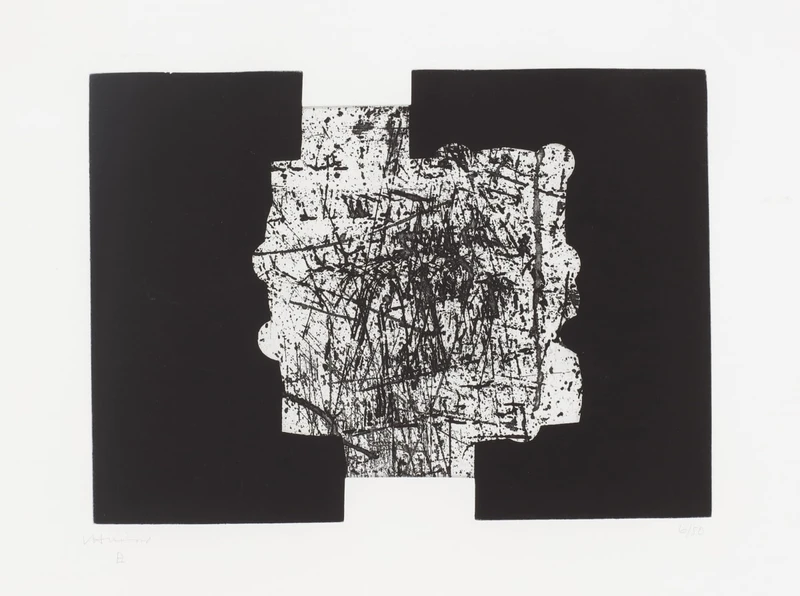The Articulation of Space: Richard Serra and Eduardo Chillida
18 Mar-23 Apr 2022


The Articulation of Space brings together thirty works on paper, dating from 1966 to the present day, by two of the most remarkable sculptors working over the past sixty years, Richard Serra (b. 1939) and Eduardo Chillida (1924 – 2002).
The prints on show, including a new work by Richard Serra, occupy an important place in the creative processes of both artists. Both Chillida and Serra, working almost exclusively in black and white, explore the interplay between the two-dimensional and three-dimensional and the physical process of making a print.
Richard Serra has been making prints that convey the weight, stability, and density of his sculptures for almost 50 years. His new work, Backstop II, 2021, is made using a combination of etching and Paintstik. Two pieces of handmade paper that have each been divided by densely layered black pigment, are framed together. This reversed composition offers a striking contrast between the weight of the black sections and the purity of the untouched white paper, as Serra considers the physical balance between light and dark.
Serra’s series, Reversal, 2015 and Horizontal Reversal, 2017 are also made using Paintstick, a combination of pigment, linseed oil, and melted wax. The mixture is moulded into large cylindrical sticks, then pressed down into a meat grinder and blended in an industrial dough mixer with silica. This is then applied in two layers, by a gloved hand, directly onto the handmade paper, pushing and rubbing in a downward direction. By layering the Paintstick, Serra asserts the physicality of the prints, which both absorb and reflect light.
An earlier body of work by Serra, Paths and Edges, 2007, is also concerned with surface quality, using both material and movement to emphasise the prints’ physical surface thereby creating expanses of darkness and texture which force the space around them to expand or contract.
Over his lifetime Eduardo Chillida produced an extensive body of graphic work, his first prints appearing in the 1950s. The earliest works in the exhibition, a series of etchings entitled Continuation I – III, 1966, demonstrate how his prints also retain the physical, weighty quality of his sculptures. Chillida’s exploration of form and line, of varying weights and configurations, dominated his graphic output during this period.
Later prints by Chillida, including the aquatints Saludo a Parmenides II, 1998, and Sin Título, 1996, explore the artist’s interest in space and organic form. Although often working in different techniques, such as etching, aquatint and woodcut, Chillida’s prints are consistently focused on simplicity and balance, principles which also informed his sculpture.
Chillida and Serra’s often pioneering and radical approaches saw the artists become prolific printmakers. Printmaking was core to Chillida’s practice, and in the case of Serra, his monumental and physical way of working sees him continue to push printmaking to sculptural extremes.